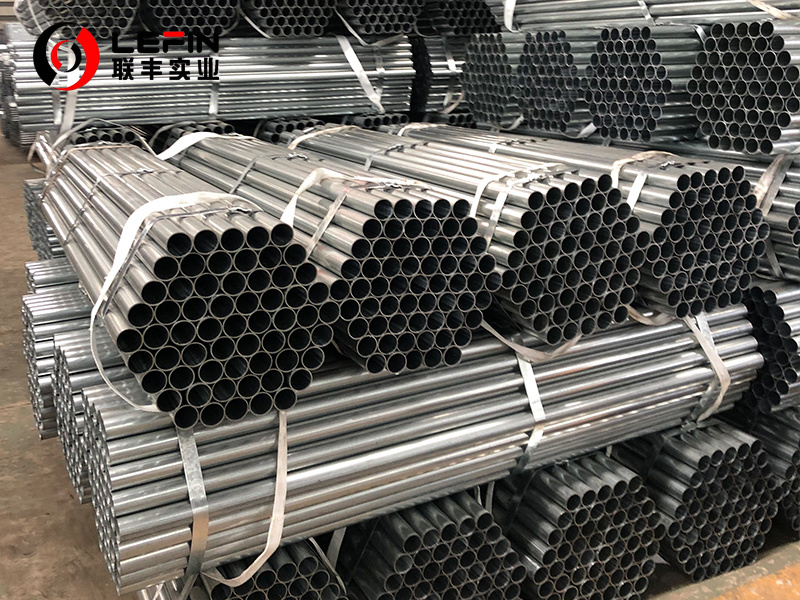



- Details
-
Overview
BS 1139 is a set of standards published by the British Standards Institution (BSI) that specifies requirements for scaffold tubes, couplers, and fittings used in scaffolding structures. The standard ensures safety, compatibility, and performance in scaffolding systems.Key Components Of BS 1139
The standard is divided into multiple parts, with the most relevant being:BS 1139-1: Scaffold Tubes
Material: Steel, often hot-dip galvanized or powder-coated for corrosion resistance.
Dimensions: Standard outside diameter of 48.3 mm (±0.5 mm), with nominal bore of 40 mm.
Wall Thickness: Common thicknesses include 3.2 mm, 3.6 mm, 3.8 mm, and 4.0 mm.
Length: Commonly supplied in lengths of 6.4 m (21 ft), but other sizes may be available.
Mechanical Properties: Tubes must meet specific requirements for hardness, tensile strength, and elongation to ensure they can withstand construction loads.
BS 1139-2: Scaffold Fittings (Couplers)
Types: Include right-angle couplers, swivel couplers, sleeve couplers, and putlog couplers.
Material: Drop-forged steel or pressed steel.
Load Capacity: Must meet specified strength requirements, such as slip resistance and torque resistance.
Design and Testing: Detailed requirements and test methods are provided to ensure secure connections and support.
BS 1139-3: Prefabricated Mobile Access And Working Towers
Design and Construction: Detailed specifications for the design and construction of mobile towers to ensure stability and safety.
Materials and Dimensions: Specific requirements for the materials used and the dimensions of the towers.
Safety Requirements: Guidelines to ensure the safe use and operation of these towers.Key Requirements & Compliance
Material Strength: Tubes must meet yield strength and tensile strength requirements.
Dimensional Accuracy: Tubes must conform to strict diameter and thickness tolerances.
Galvanization: Most tubes must be hot-dip galvanized for corrosion resistance.
Load Testing: Couplers must undergo rigorous load tests (e.g., slip resistance, torque tests).
Replacement By EN Standards
BS 1139 has been largely superseded by European Standards (EN) such as:EN 39: Loose steel tubes for tube and coupler scaffolds
EN 74: Couplers, spigot pins, and baseplates for scaffolds
However, BS 1139 remains influential in many regions, especially where older scaffolding systems are still in use.
Applications
● Used in tube-and-fitting scaffolding (traditional scaffolding).
● Essential for construction, maintenance, and industrial access.
● Ensures safety and stability in scaffolding structures.
BS 1139 is a critical standard ensuring the safety and reliability of scaffolding components. While newer EN standards have replaced it in Europe, BS 1139 remains a benchmark for scaffolding quality, particularly in the UK and Commonwealth countries.



BS 1139: Scaffolding Tubes And Fittings
Subcategory
Keyword
- Details
-
Overview
BS 1139 is a set of standards published by the British Standards Institution (BSI) that specifies requirements for scaffold tubes, couplers, and fittings used in scaffolding structures. The standard ensures safety, compatibility, and performance in scaffolding systems.Key Components Of BS 1139
The standard is divided into multiple parts, with the most relevant being:BS 1139-1: Scaffold Tubes
Material: Steel, often hot-dip galvanized or powder-coated for corrosion resistance.
Dimensions: Standard outside diameter of 48.3 mm (±0.5 mm), with nominal bore of 40 mm.
Wall Thickness: Common thicknesses include 3.2 mm, 3.6 mm, 3.8 mm, and 4.0 mm.
Length: Commonly supplied in lengths of 6.4 m (21 ft), but other sizes may be available.
Mechanical Properties: Tubes must meet specific requirements for hardness, tensile strength, and elongation to ensure they can withstand construction loads.
BS 1139-2: Scaffold Fittings (Couplers)
Types: Include right-angle couplers, swivel couplers, sleeve couplers, and putlog couplers.
Material: Drop-forged steel or pressed steel.
Load Capacity: Must meet specified strength requirements, such as slip resistance and torque resistance.
Design and Testing: Detailed requirements and test methods are provided to ensure secure connections and support.
BS 1139-3: Prefabricated Mobile Access And Working Towers
Design and Construction: Detailed specifications for the design and construction of mobile towers to ensure stability and safety.
Materials and Dimensions: Specific requirements for the materials used and the dimensions of the towers.
Safety Requirements: Guidelines to ensure the safe use and operation of these towers.Key Requirements & Compliance
Material Strength: Tubes must meet yield strength and tensile strength requirements.
Dimensional Accuracy: Tubes must conform to strict diameter and thickness tolerances.
Galvanization: Most tubes must be hot-dip galvanized for corrosion resistance.
Load Testing: Couplers must undergo rigorous load tests (e.g., slip resistance, torque tests).
Replacement By EN Standards
BS 1139 has been largely superseded by European Standards (EN) such as:EN 39: Loose steel tubes for tube and coupler scaffolds
EN 74: Couplers, spigot pins, and baseplates for scaffolds
However, BS 1139 remains influential in many regions, especially where older scaffolding systems are still in use.
Applications
● Used in tube-and-fitting scaffolding (traditional scaffolding).
● Essential for construction, maintenance, and industrial access.
● Ensures safety and stability in scaffolding structures.
BS 1139 is a critical standard ensuring the safety and reliability of scaffolding components. While newer EN standards have replaced it in Europe, BS 1139 remains a benchmark for scaffolding quality, particularly in the UK and Commonwealth countries.



Related products
Product Consulting

Address: Hengtai Road,Daqiuzhuang Town,Jinghai County,Tianjin,China
Mob: +8615122229899(whatspp)
Phone: +86 22 58171905
Fax: +86 22 58171902
E-mail:info@lefinsteel.com
Get company updates

Tianjin Lefin Industrial Co.,Ltd. All rights reserved City sub-station SEO www.300.cn

